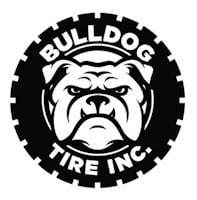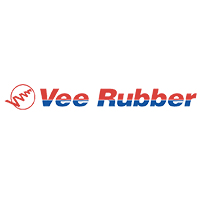
Home > general information > Tips and Guides > Technical guides > Quad ATV >
The essentials to know before choosing your quad tires
The quad tire is a specific and varied product whose characteristics may vary from one model to another.
It is particularly important to equip your quad with tires adapted to its activity.
Firstly because they ensure the safety of the driver, being the only points of contact between the road and your vehicle. Then, because depending on the discipline chosen (competition, road or even hiking), the tires will be shaped in different ways and will have specific properties: density of gum, shape, weight, etc.
You must therefore choose your tire according to the type of vehicle and the size of the rims.
Functions of a quad tire
To ensure comfort and safety, the quad tire must fulfill several functions:
The direction : the tires must steer the quad correctly, guaranteeing it balance and trajectory.
Depreciation : the quad tire is used to dampen the asymmetry of the terrain and ensure comfort for the pilot.
Robustness : the quad tire must be able to support more than fifty times its weight.
Resistance : the tires must be sufficiently resistant car they are less strained, the speed, the riding style, the surface of the tracks and roads, the load and the quality of the rubber.
The business trip : depending on the frequency of use of the quad, the tires are more or less stressed. They must allow the driver to adapt his driving to the type of terrain.
The transmission : the quad tire must guarantee a good connection during acceleration and braking.

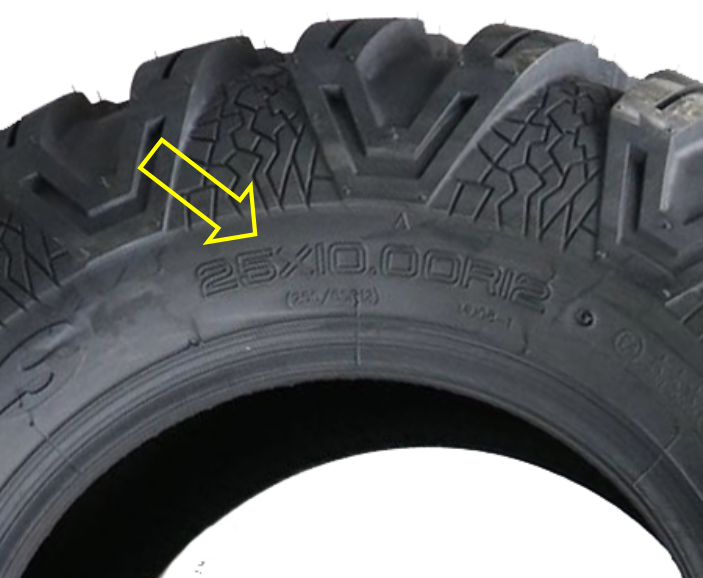
Dimension of a quad tire
Before knowing what type of tire to choose, the size of your current tires should be taken into consideration, in order to use the same ones. The dimensions can differ between the front and the back, they are always expressed in this way:
Height / Width â € “rim diameter (all expressed in inches)
At these dimensions, we must consider the number of ply (or ply): this is an indicator of rigidity and therefore of tire resistance. Previously, the ply count represented the number of rubber layers. Today this is no longer the case. In contrast, the ply rating reflects the overall strength and load capacity of the tire. The more ply the tire has, the less comfortable it will be and the more robust it will be. Between 2 and 8, the number of plies determines the flexibility of the deformation of the tire and its resistance to tearing.
You can change the tire size, for examplear example to increase the ground clearance of your quad. In this case, it is advisable to increase in the same way the front and the rear, under penalty of unbalance your quad. You can also vary the width which will affect the wheel handling. The rim tolerates more or less 2 points in height and 1 point in width, provided that the new tire does not touch the mechanical elements of the quad.
Par example, from an original dimension 20 / 9 â € “12, you could change to 22 / 10-12.
ATTENTION: If your quad has 4 mo wheelstrices, be aware that changing the size can sometimes cause the differential to fail. Before any change, check with the manufacturer.
The tires
There are different types of rubber, suitable for the terrain and the use of your quad.
The tires are available in different compounds:
Yellow: hard
Blue: medium
Red: tender
The softer the rubber, the better the grip on wet ground. On dry and stony ground it is preferable to choose a tire with a hard compound.

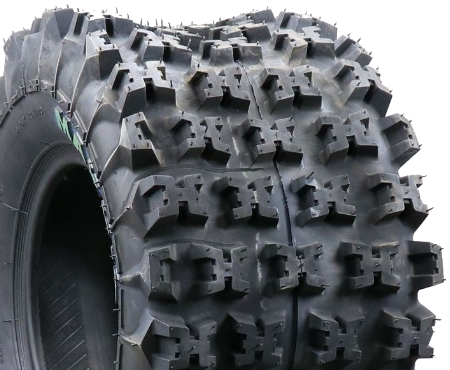
Crampons
A multitude of shapes of crampons exist; manufacturers keep creating new ones. Particular attention must be paid to the choice of this element, thisar it's not all about taste or aesthetics.
The shape of the studs must be adapted to the terrain. The best tire is the one whose studs allow dirt, mud, etc. to be evacuated as quickly as possible. So, unless you are driving in sand, avoid the front tires with studs the width of the strip. bearing. The lack of free space means that the residue will clump together and the tire will lose all of its grip.
To fully enjoy your vehicle, the tires must properly evacuate water, stones, mud. This is only possible with spaced studs.
Pressure
The pressure required for the operation of quad tires varies according to their use. In any case, it is low pressure tires that
- A pressure between 0,4 and 0,9 bar for road quad tires
- A pressure between 0,4 and 0,7 bar for sporty quad tires
The different categories of quad tires
Quads are used in very different activities. Some own a leisure quad, others use quads on the road as a light means of transport, still others ride quads in competition. Without forgetting the use of quads in the agricultural world.
Depending on the use that one makes of his quad, there are tires adapted to the needs of the pilot.
In order to get the maximum efficiency and performance from it, whatever the use you make of it, you should equip your quad with suitable tires. A quad tire must be able to carry the vehicle, steer it, tow it while preserving its balance and safety. The parameters are very different according to the required performances and according to the type of ground borrowed.

Utility or all-terrain tires
The tires are designed for professional use. The aggressive "V" profile ensures perfect contact with the ground. It has a radial carcass that can withstand heavy loads. This type of tire with large studs is best suited for driving on wet and dry dirt roads. Their design gives them excellent traction which can be useful on big climbs. The studs perfectly evacuate dirt and mud.

Leisure tires
Specially adapted to walks, the mixed profile allows you to ride on any type of terrain, including the road. In this specific case, the tire will be approved for the road. This type of tire can also be fitted to children's quads. Inspired by road tires, this tire is an excellent compromise. This type of tire is generally intended for occasional use. Equipped with small lugs, you maintain maximum grip for all types of track.
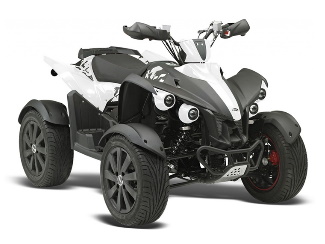
Road tires
Exclusively reserved for driving on the road, its lined profile ensures total efficiency on asphalt. It must be "road" approved, not suitable for "all terrain" use. This type of tire is specially designed for use on hard terrain (lawns and asphalt). It is easily identifiable thanks to an "E4" marking on the side.

Competition tires
Exclusively reserved for the competitions of cross, its profile is fitted with studs covering the tread and the shoulders. As a result, it is very adherent to the ground and in curves. Its numerous crampons evacuate dirt and stones perfectly at high speed. In quagmires, its performance is limited. Its handling is excellent on gravel and gravel.
Some brands of quad tires available:
Properly maintaining your quad tires
(to be placed before the conclusion, to extend the guide without unbalancing it)
Why maintain your tires regularly?
Well-maintained tires maintain their performance and ensure a longer lifespan. Mud, stones, or even prolonged storage can damage the rubber or valves.
The right actions to take:
Check the pressure before each outing, especially if the quad remains immobilized for several weeks.
Clean the tires with clean water after driving on muddy or salty terrain.
Check the flanks to spot cuts or cracks caused by the sun.
Avoid deformations : store the quad on stands or move the vehicle slightly every month.
Monitor the tightness of the rims : a poorly secured tire causes vibrations and premature wear.
50 tip Factory :
Consider fitting your tires with reinforced valves and using a suitable low-pressure gauge for accurate monitoring.
Conclusion
A suitable type of tire corresponds to each practice. There is therefore no need to invest in a special road quad tire if you plan to ride on sandy terrain. The main thing is to know all the characteristics of the tires suitable for the discipline you want to practice. Otherwise you will not be able to achieve good performance with your vehicle.
A quality wheel is therefore not the one that is the most resistant or the most expensive, but the one that will be best suited to your riding style, your driving speed and the coating of the vehicle. Track. It is strongly recommended to respect the recommendations of the vehicle manufacturer concerning the dimensions and characteristics of the tires.
Flat or domed tires
Not all tires have the same profile. It can vary between rounded and flat. The choice of profile will determine the behavior of your machine on different terrains and condition your driving.
The domed profile tire
This profile must be mounted at the front car its shape will adapt to different terrains and limit contact with the ground. It allows not forcer on the direction. All sports quads in two wheel motrices are equipped with this profile at the front.
Although suitable for all types of terrain, this profile does not offer much grip, especially on slopes; they are essential for recreational and utility quads.
The flat profile tire
The flatter the profile, the more the tire will grip the ground and provide traction. This is the tire that offers the most ground surface. The use of this profile was recommended for the rear before the arrival of the power steering, car it was hardening the management enormously. This profile is less comfortable car it takes less of the shape of the land. It is perfect for sliding riding. Flat profile tires are used extensively on sport and competition quads.
A few tips
A reasonable and intelligent choice will allow you to achieve great savings. If you use your quad to go on the road, there is no need to invest in full-featured, ultra-resistant tires reserved for competition. Likewise if your outings are infrequent, choose premium tires.
The approved "Road" quads tires identifiable by an E4 marking on the sidewall are strongly recommended for all "leisure" users. Indeed, they will prevent you from fines in the event of a traffic control and in the event of a traffic accident your insurance will not be called into question.
Do you have to change both tires at the same time?
The tires on the same axle must imperatively be identical. If they are not identical, it may happen that one side does not respond like the other or not as fast, then the quad is difficult to control.
A tire change involves replacing the valve. Independent from the tyre, it preserves its watertightness, its longevity and ensures its safety. It comes under considerable pressure and wears out with the force centrifugal. In the event of a defect, it can lead to real danger.
When changing tires ?
The wear of the tires depends on the surface of the ground, the style of driving, the speed, the supported load epar the vehicle, the quality of the gum and the deteriorations that are frequent when hiking.
- The tires must have visible tread patterns over the entire running surface. In France, the legal tread wear limit is 1,6 mm for vehicles under 3,5 T. For tires with a TWI marked wear indicator, it is important to check Make sure the witness does not exceed the height of the structure. As soon as it touches it, the tire must be changed.
- Tire wear depends on the use made of the quad. On road or motorable paths, a few millimeters of crampons are sufficient. On difficult paths, in trial or in the mountains, a tire which slips at the slightest opportunity, which no longer has any grip, must be changed.
- Tire replacement is mandatory on a quad after a puncture if any deterioration is noted, especially when the tire has been torn on the side.
As with cars, change both axle tires if they have a difference in wear of more than 5 mm.






